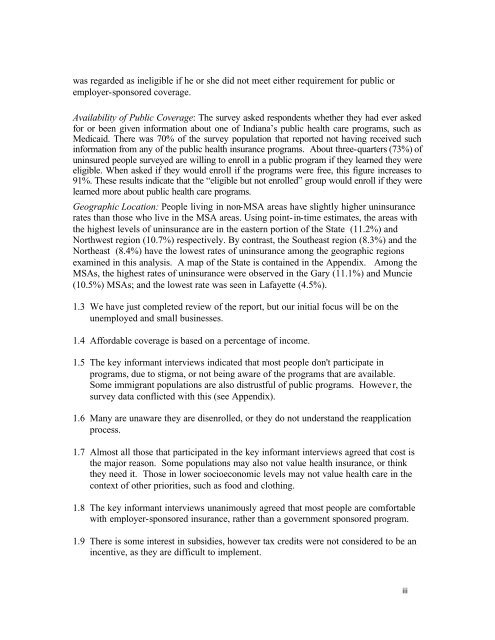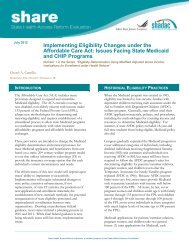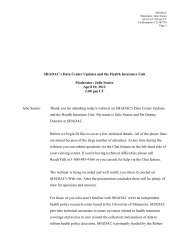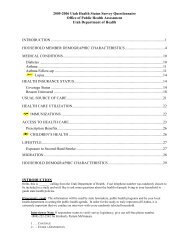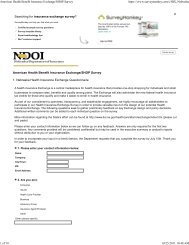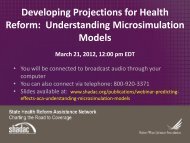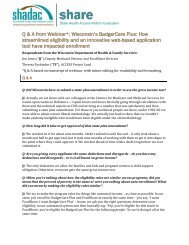2003 findings with survey instrument - Shadac
2003 findings with survey instrument - Shadac
2003 findings with survey instrument - Shadac
- No tags were found...
You also want an ePaper? Increase the reach of your titles
YUMPU automatically turns print PDFs into web optimized ePapers that Google loves.
was regarded as ineligible if he or she did not meet either requirement for public oremployer-sponsored coverage.Availability of Public Coverage: The <strong>survey</strong> asked respondents whether they had ever askedfor or been given information about one of Indiana’s public health care programs, such asMedicaid. There was 70% of the <strong>survey</strong> population that reported not having received suchinformation from any of the public health insurance programs. About three-quarters (73%) ofuninsured people <strong>survey</strong>ed are willing to enroll in a public program if they learned they wereeligible. When asked if they would enroll if the programs were free, this figure increases to91%. These results indicate that the “eligible but not enrolled” group would enroll if they werelearned more about public health care programs.Geographic Location: People living in non-MSA areas have slightly higher uninsurancerates than those who live in the MSA areas. Using point-in-time estimates, the areas <strong>with</strong>the highest levels of uninsurance are in the eastern portion of the State (11.2%) andNorthwest region (10.7%) respectively. By contrast, the Southeast region (8.3%) and theNortheast (8.4%) have the lowest rates of uninsurance among the geographic regionsexamined in this analysis. A map of the State is contained in the Appendix. Among theMSAs, the highest rates of uninsurance were observed in the Gary (11.1%) and Muncie(10.5%) MSAs; and the lowest rate was seen in Lafayette (4.5%).1.3 We have just completed review of the report, but our initial focus will be on theunemployed and small businesses.1.4 Affordable coverage is based on a percentage of income.1.5 The key informant interviews indicated that most people don't participate inprograms, due to stigma, or not being aware of the programs that are available.Some immigrant populations are also distrustful of public programs. However, the<strong>survey</strong> data conflicted <strong>with</strong> this (see Appendix).1.6 Many are unaware they are disenrolled, or they do not understand the reapplicationprocess.1.7 Almost all those that participated in the key informant interviews agreed that cost isthe major reason. Some populations may also not value health insurance, or thinkthey need it. Those in lower socioeconomic levels may not value health care in thecontext of other priorities, such as food and clothing.1.8 The key informant interviews unanimously agreed that most people are comfortable<strong>with</strong> employer-sponsored insurance, rather than a government sponsored program.1.9 There is some interest in subsidies, however tax credits were not considered to be anincentive, as they are difficult to implement.iii


